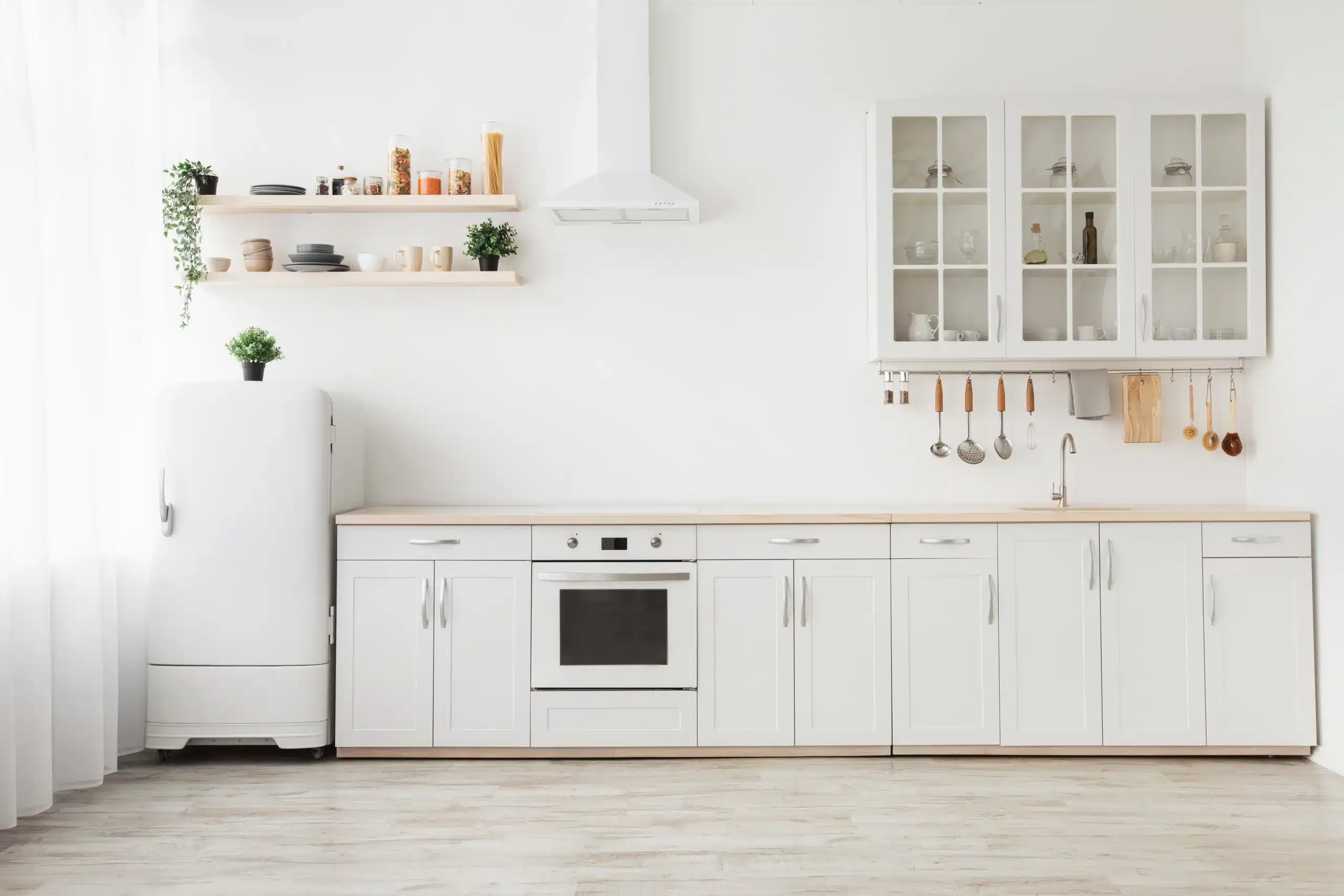If you’ve ever felt overwhelmed by the constant barrage of visual clutter in our modern world, minimalism might be the breath of fresh air your senses are yearning for. But is it possible to achieve a minimalist oasis in the midst of our bustling lives? For some, minimalism in interior design is a steadfast philosophy, a mantra of “less is more.” For others, it’s an uninviting prospect, equated with blandness and a lack of character. Let’s delve into the world of minimalism and uncover its true appeal.
At its core, minimalism is the art of simplicity and the belief that “less is more.” It’s an interior design approach that champions the idea that having fewer material possessions can lead to a happier, more fulfilled life. When it comes to your environment, minimalism is about creating a serene space with a focused aesthetic that minimizes distraction and encourages calm.
Embracing Functionality and Simplicity
Minimalism in interior design is not just about aesthetics; it’s a philosophy that aligns form with function. Every piece in a minimalist room should serve a purpose, and its design should be stripped down to its essential elements. This focus on practicality means you often find multi-functional furniture and storage solutions that meld into the background.
Principles of Minimalism
Four defining principles guide the minimalist design philosophy:
– Simplicity: The focus is on simple, uncluttered forms with clean lines.
– Elimination: Unnecessary, ornate details are trimmed away.
– Space: Empty or negative space is just as important as filled space, giving the eye and the mind room to rest.
– Serenity: The resulting environment is peaceful, fostering a sense of calm and tranquility.
Minimalist Design Elements
What does a minimalist home look like? It’s a space that features:
Clean Lines and Open Spaces
Think straight, unadorned furniture with sleek, geometric shapes. Open space is a crucial element of minimalist design; it allows each piece to stand out and breathe.
Neutral Color Palettes
Whites, greys, and beiges are the staple colors of a minimalist design, creating a serene and harmonious space. They also serve as a clean, blank canvas, allowing the occasional pop of color to make a dramatic statement.
Natural Materials
From wood to stone and leather, natural materials play a significant role in bringing warmth to minimalistic spaces. The inherent texture and variation in these materials add visual interest without the need for extra decor.
Decluttered and Organized Spaces
Minimalism requires rigorous decluttering. It’s about keeping only what you need and what brings you joy. The result is a home that feels less chaotic and more intentional.
Benefits of Minimalism
A minimalist approach to interior design can have far-reaching benefits beyond aesthetics:
Increased Focus and Productivity
A clean, uncluttered environment can help sharpen your focus by reducing the number of visual distractions.
Reduced Stress and Anxiety
The simplicity of a minimalist space can also lead to a calming effect, reducing stress and anxiety. Life feels more manageable in an unencumbered setting.
Enhanced Visual Appeal and Aesthetics
When each piece has a distinct purpose and design, it’s allowed to shine in a minimalist space. The result is a heightened appreciation for the aesthetic qualities of individual items.
Easy Maintenance and Cleaning
Because minimalism is about owning less, there’s less to clean and maintain. A minimalist space is not only easy on the eyes but also on the one doing the dusting and vacuuming.
Challenges and Criticisms
Despite its many benefits, minimalism is not without its detractors:
Perception of Boredom and Lack of Personality
One of the most common criticisms of minimalist design is that it can seem bland or sterile. There’s a fear that removing color and detail will also strip a space of its personality.
Balancing Minimalism with Individual Style
Achieving a minimalist space that still reflects your individuality is perhaps one of the biggest challenges. How do you keep your home from looking like a page out of a catalog? It’s all about the details and the pieces you choose to include.
Achieving Minimalism in Practice
In the real world, the path to minimalism can be a rocky one. It often involves letting go of possessions with sentimental value and challenging long-held beliefs about consumption and ownership.
Case Studies and Examples
Let’s peek into real-life examples of successful minimalist spaces:

The Zen Office
Picture a sparsely furnished office in a neutral color palette, with a single succulent on a wooden desk—a space designed for undistracted focus and creative thinking.
The Monochromatic Living Room
Blacks and whites dominate the living room, with a statement chandelier and a single, well-placed art piece as focal points. The result is a sleek, modern space that emanates calm.
The Scandinavian Kitchen
An all-white kitchen with streamlined cabinetry and open shelving, organized with precision, exemplifies the Scandinavian approach to minimalism.
Minimalism in interior design asks us to be intentional about the spaces we inhabit, for the betterment of our minds and our lives. While the journey to minimalism can be daunting, the benefits of living in such a space are well worth the initial challenges. It’s not about imposing a set of rigid rules; it’s about creating an environment that truly serves you, enhances your day-to-day, and provides respite from the bustle of the world. So, is minimalism just an exercise in boredom, or is “less” just more of what we really need? The answer is a beautiful balance of both, and it’s waiting for you to explore and embrace its profound simplicity.



